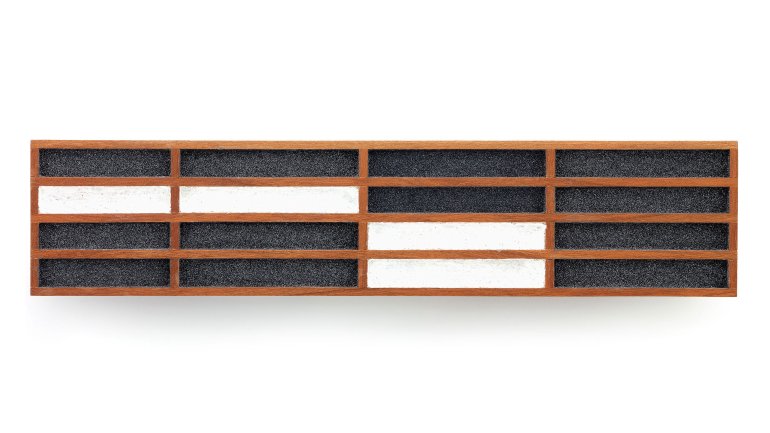Insights from Jeweler Thomas Gentille
Lately I’ve been mulling the following two insights from the great American jeweler Thomas Gentille, whom it was my honor to interview onstage at the 47th annual conference of the Society of North American Goldsmiths (SNAG), held May 23 – 26 in Portland, Oregon.
By trying to give [viewers] nothing, in one sense, I’m trying to give them everything.
I’m only interested in the final object.
I’m presenting his remarks here somewhat out of context. Still, they’re ideas he discussed at the conference and has articulated elsewhere (read his oral history in the Smithsonian’s Archives of American Art, from which the first of the above quotes is taken), and I can’t get them out of my head.
A youthful 82, Gentille has been a jewelry artist for 60 years. Way before it was cool, he was making sublime use of non-precious materials, from cork and feathers to linoleum and sawdust, and, famously, eggshell. His pieces are prized by collectors and museums, and especially revered in Europe. His signature brooch forms are small paintings – geometric, enigmatic, each a beautiful harmony of color, form, texture, and light. The word “beauty” is fine with him, by the way. He also likes “craftsman.”
So what does he mean about nothing/everything? Simply that in making art that is non-objective (he prefers that term over “abstract”), he opens a window to a world of thought, feeling, and vision. We can get lost in a piece in a personal way, stir our subconscious, tell our own stories. To me, that’s the gift of art, those moments of infinity. About the object being what matters? Like most of us, Gentille enjoys the backstory, loves learning about the person behind the art, the materials, techniques, intent. But in the end, the work exists on its own, to move us or not. These strike me as timeless principles, useful as antidotes to the relentless distractions of modern life.
“MADE: Makers Across Disciplines Engage” was the theme of this year’s SNAG gathering, kicked off by an electric keynote speech by furniture designer-maker Vivian Beer, who takes a dynamic, expansive, often collaborative approach to her practice. She’s fascinated by interconnectedness – bridges and infrastructure, the forces of nature and culture – and considers the art studio as “anywhere you’re fully engaged.” She was a perfect choice to open the conference. Gentille, who closed it, is a longtime New Yorker, engaged across disciplines practically by definition. He’s studied dance, paints watercolors, writes short stories, has a collection of hundreds of old films. (After 1960, he says, they get too graphic.) Yet, alone and focused in his small studio, he reminds us that wherever we go, there we are.
This summer will be busy for Gentille, as he makes new work for a fall solo show at Gallery Loupe and prepares for induction as a peer-nominated Fellow of the American Craft Council. His work remains as fresh as ever, and his creative drive undimmed. His secret to staying inspired? “Every piece must have something new, however minute.”

